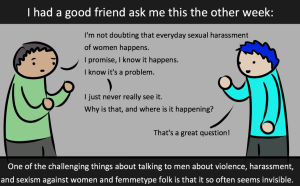
Source: Getty Images
Parents are really concerned these days with the amount of media their children consume – and with good reason, too!
I mean, after all, your taxi ride to basketball practice now comes with complimentary TV programming. If your child doesn’t have a smartphone, then one of their friends will, and they’ll know how to YouTube and Google anything and, yes, everything. And while your child researches online for homework, they are bombarded with pop-up ads and animated banners.
No matter how you try to fight it, the truth is: The media is everywhere. All the time.
And when you consider that children ages 2-11 see more than 25,000 advertisements a year on TV alone) (not including product placement), it’s no wonder parents feel like they want to do something about it!
As a parent, you want to protect your children and shelter them from danger as much as possible. So when it comes to media, it’s no different.
Perhaps there are messages about sex or violence that you feel your child isn’t ready to consume. Or maybe it’s their schoolwork you’re concerned with and how distracting media can be.
You’ve likely even created rules to monitor their media consumption.
No TV after 6pm. No TV on the weekdays. They can only watch preapproved movies. Video games for only an hour a day. No video games at all.
And these are all great ways of monitoring your children’s media consumption.
But the truth is: there’s no use in running away from something that’s always going to be there.
Because even if your children don’t watch any TV, they’re still interacting with kids that do. Even if they’re not allowed to play video games, they have friends that do.
You can’t change the fact that media continues to spread, but you could change the way your child perceives the media and its messages.
What’s Media Literacy? Sounds Complicated.
It’s not as fancy as it may sound. I promise.
Media literacy is about evaluating, analyzing, and understanding what the role of media plays in our lives.
As parents, you teach your children when to cross the street, how to eat, and how to tie their shoes.
But what about teaching them to question their surroundings?
Media literacy does just that: It questions the media.
It helps us ask questions like: Who wrote it? What was their intent? Who’s funding the project?
They’re vital things to ask because they dig deeper at the media rather than just observing it at surface value.
By teaching media literacy to your children, you are empowering them to understand and take control of the media instead of the media taking control of them.
Why Should I Incorporate Media Literacy?
Monitoring the time your child spends consuming media is great.
But even if they spend very little time watching TV or playing on the computer, they’re still walking down the street seeing billboards, taking the subway and seeing movie posters, and interacting with their media-savvy friends.
They are still consuming these messages – whether you like it or not.
Messages about body image, gender roles, sexuality, family structure, and race (just to name a few!) are being sent by the media to impressionable minds like those of children – on a constant basis.
And for some parents, this is problematic.
Unattainable images in magazines can lead to low self-esteem and negative body image in girls, which can then translate to eating disorders.
And meanwhile, action and horror films teach kids, especially boys, about hyper-masculinity in connection to violence, leading them to have a very limited mentality regarding how boys and men can and should act.
Your child is young and impressionable.
All these messages can be pretty confusing. And if left alone, media could be the most predominant voice in your child’s life.
They need help deciphering these messages.
That’s where you come in.
Three Media Literacy Tactics
1. Spark Curiosity with “Why?”
Remember when your child used to ask “why?” for everything? Maybe they still do.
Not only should you feed into this curious mind, but perhaps you should take a few pointers from them as well.
Ask questions about the media, and ask them often.
For example, when you’re at the convenience store in the checkout lane, even if your child’s not old enough to read, they’ll still be sure to see the pictures on the magazine covers.
This is a great opportunity for you to insert a dash of media literacy.
“Why do you think she’s wearing that?” “Why would that be on the cover of a magazine?”
And the checkout lane isn’t the only place to practice questioning the media.
No car ride is complete without listening to the radio, so makes sure not to miss out on this vital opportunity.
“What did they say in that lyric?” “What does that mean?”
Children are quick to learn the lyrics to songs and once they do, they’ll repeat them often and thoughtlessly.
So it’s important to take time out to make them think about what they are actually reciting and what it means.
They may not have all of the answers, but the fact that you’re arousing their curiosity teaches them that it’s okay to question the media instead of just consuming it blindly.
2. Alternatives
Along with your “why?” questions, try bringing up alternative situations and scenarios.
Push them to think outside of the box of what they’re currently seeing.
While they’re watching their favorite show, for instance, bring up an alterative to the plot or characters.
“What if it were a gay couple instead? Would that change the story?” “What if a woman played that role instead of a man?” “What if it were an Asian man instead of a white man?”
Bringing up alternative scenarios is a great way of combating media’s framework of default race, gender, and orientation.
Just bringing up an alternative scenario gets their critical thinking skills flowing.
But what if your child responds negatively?
“That wouldn’t make any sense. A woman wouldn’t play that role.”
A child’s bluntness can be really shocking, but remember that like you, they are a product of our society – a society heavily influenced by media.
So remember not to judge your child’s response. Instead, respond by sharing how you feel.
“I think a woman could play that role.” “I’m a woman, and I think I’d be great at that role.”
It’s okay to disagree with your child as long as you don’t judge their child’s response.
3. Get Personal
Be honest with your child.
If something offends you, let them know.
And make sure to ask them what they think and how they feel.
After watching a movie, for example, ask your child what they thought of it. Then let them know how a characters depiction made you feel.
“I didn’t like how the moms were represented. It made me feel kind of bad. What do you think?”
And video games are no different.
“The guy characters always seem to rescue the girl. That makes me feel like I’m a prize.”
Children stop listening when they feel like they’re being lectured.
But they’ll respond to sincerity, especially when it comes from someone as influential as their parent.
Don’t underestimate sharing your feelings with your child and the influence it has on them.
Media Literacy Isn’t a Magic Wand
Media is a crucial and predominant part of our environment, so practicing media literacy once won’t do the trick.
Media literacy needs to be integrated into our everyday lives to the same degree that media is interwoven into our existence.
It should be embedded into your daily activities. That way, it feels conversational.
Don’t get frustrated if your child isn’t responding positively or responding the way you think he or she should be when you first incorporate media literacy. Be patient and make sure to not force it.
Media and technology are continuously growing and changing.
With apps and new gadgets being created so rapidly, it can get a bit overwhelming.
Feel reassured that not only will these tips assist you, but along the way, you’ll be sure to create a couple of your own tips as well.
Sheltering your children from the media isn’t only impossible, it’s not helpful either.
What they could use instead is someone guiding them and deciphering the messages being sent to them.
And who better to take on that role than you?
Want to discuss this further? Login to our online forum and start a post! If you’re not already registered as a forum user, please register first here.
Kat Lazo is a self-proclaimed social commentator, media critic, and overall, a woman who questions everything. Having studied Advertising and Marketing Communications at the Fashion Institute of Technology, she’s ready to add some feminism to the ad world. Check out more of her writing at TheeKatsMeoww, watch her videos on YouTube, and follow on Twitter @TheeKatsMeoww and Tumblr.
Search our 3000+ articles!
Read our articles about:
Our online racial justice training
Used by hundreds of universities, non-profits, and businesses.
Click to learn more
Most Read Articles
- « Previous
- 1
- …
- 30
- 31
- 32



















